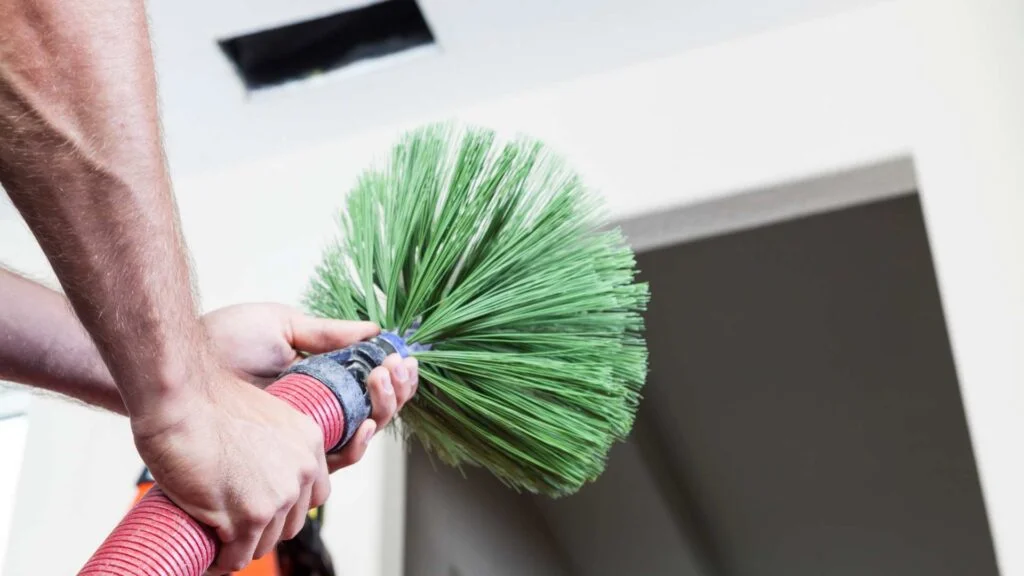Many people suffer from allergies, but few realize that their own homes might be the root of their problems. One often overlooked source is the dust lurking in our air ducts. Hay fever symptoms, such as sneezing, runny nose, and itching may actually be triggered by dust mite allergens present in air ducts. Understanding the link between dust mite allergy and air ducts is crucial for maintaining a healthy living environment.

The Connection Between Dust Mites and Air Ducts
Dust mites are tiny creatures that thrive in warm, humid environments. Your home’s air ducts can be perfect breeding grounds for these pests. When your HVAC system operates, it can circulate dust mite allergens throughout your home, exacerbating allergy symptoms.
The Impact of Dust Mite Allergies
Continuous exposure to dust mite allergens can lead to respiratory issues, exacerbating conditions such as asthma. Understanding how dust mites infiltrate our air environment is essential. Indoor air quality can significantly decline due to dust mites, affecting overall health and well-being.
Maintaining Air Duct Cleanliness
Why clean ducts? Regular cleaning of air ducts plays a pivotal role in reducing allergens within a home. When air ducts are clean, they decrease the presence of dust mites and other allergens. As a result, allergy symptoms can be better managed.
Steps to Clean Your Air Ducts
- Turn off your HVAC system safely.
- Remove and clean register covers.
- Use a vacuum to clean duct interiors.
- Consider hiring professional services for a thorough cleaning.
Professional Air Duct Cleaning
Engaging professional cleaners ensures that the job is done efficiently and comprehensively. They use specialized tools to reach all areas of your ducts.
Health Benefits of Professional Cleaning
With cleanliness comes fewer allergens. Professional air duct cleaning can improve indoor air quality and help reduce dust mite allergies.
Preventive Measures Against Dust Mite Allergies
While cleaning is essential, preventive strategies help manage allergens better in homes.
Controlling Humidity Levels
Dust mites thrive in humid conditions, so it’s vital to keep your home’s humidity below 50%. Control humidity through proper ventilation and the use of dehumidifiers.
Regular Maintenance
Ensuring regular maintenance of HVAC systems will keep dust mites at bay. Regular residential cleaning can bring comfort to your living environment.
Choosing the Right Cleaning Service
Find services that provide transparent processes and use eco-friendly cleaning solutions. Choose experienced professionals who understand the health implications of dust mite allergens.
Verifying Certification and Training
Ensure that air duct cleaning companies employ certified technicians who understand the complexities involved in thorough cleaning.
Improving Indoor Air Quality
Clean air ducts mean improved air quality. For homes with sensitive individuals, maintaining low allergens can be particularly beneficial.
Products That Improve Air Quality
Consider products that reduce allergens in the air, such as air purifiers. These can significantly enhance the way you breathe and contribute to overall health.
Conclusion
Connecting dust mite allergies with your home’s air duct system is a vital step toward healthier living. Regular maintenance and professional cleaning are crucial actions that should not be overlooked in creating a safe and pleasant home environment.

Frequently Asked Questions (FAQs)
How often should air ducts be cleaned?
Ideally, every 3 to 5 years, depending on environmental factors.
Can dust mites be completely eradicated?
While it’s challenging, reducing humidity and regularly cleaning can substantially lessen their presence.
How does indoor air quality affect health?
Poor air quality can exacerbate allergies and asthma, emphasizing the importance of clean air ducts.
For detailed information on duct cleaning, you can explore more through credible sources like HVAC cleaning benefits.
This article contains affiliate links. We may earn a commission at no extra cost to you.